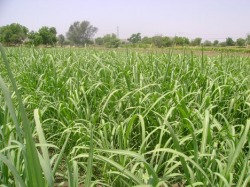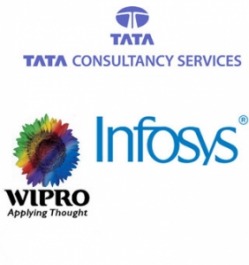 The Minister for Civil Aviation, Mr Praful Patel, has cleared the proposal for allowing SpiceJet, the Delhi-based low-cost airline, to start international operations.
Official sources told Business Line that the Ministry of Civil Aviation will now write to the Directorate-General of Civil Aviation (DGCA) to allow the airline to start operations on specific routes.
The airline meets the Government criteria for starting international operations as it completes five years of operations in May and has a fleet of more than 20 aircraft. The airline is likely to start its international operations with flights to Kathmandu, Dhaka and Colombo some time in June, sources in the DGCA said, pointing out it takes some time to get manuals and other procedures approved for starting the operations.Jet Airways, JetLite, Kingfisher, Air India and Air India Express are the other Indian carriers permitted to operate abroad from India, while about 70 international airlines fly regularly to India.
SpiceJet will connect 19 Indian cities from April 15 when it starts daily flights to Agartala. Since its first flight in May 2005, the airline has attracted considerable investor interest. In 2005, the US-based private equity investor W.L. Ross invested Rs 345 crore in the company. Currently, some investors, including Religare, are said to be interested in picking up a stake in the airline
It reported a net profit of Rs 108.9 crore for the quarter ended December 31, 2009 against a loss of Rs 18 crore a year before.
Source : The Hindu Business news
 Despite volcanic ash and Bharat bandhs, which threatened to clip the wings of airlines coming out of recession, carriers may be ending the fourth quarter on a good note. A comparison between the three listed players, Kingfisher Airlines, Jet Airways and SpiceJet, shows the trend is definitely on an upswing — the three have a market share of 26 per cent (Jet Airways and JetLite together), 23 and 11.9 per cent respectively, according to the Directorate General of Civil Aviation (DGCA) figures.
Jet Airways is expected to break even in FY11 in domestic and international operations. The carrier, which gets 56 per cent of its revenues from international operations, has also seen its international operations stabilising, with most international routes breaking even.
Similarly, Kingfisher has also made a foray into the international market and has launched operations on eight international routes recently, while SpiceJet is planning to go global from June onwards. While it looks like the increase in passenger traffic might help airlines in offsetting the effect of high aviation turbine fuel (ATF) prices, the large debt on the books of the biggies could be a spoiler. Jet Airways has debt of about Rs 14,000 crore, while Kingfisher owes over Rs 6,000 crore.
HSBC Global Research mentions that Jet Airways is looking to cut its interest cost by lowering high-cost debt through selling a plot of land in Mumbai, a sale and leaseback of its fleet and raising funds by equity dilution. This restructuring is expected to show benefits in FY11.
It has also been reported that both Jet and Kingfisher are looking at raising Rs 2,000 crore through qualified institutional placements and other instruments to bring down debt.
The DGCA figures showing the percentage change over the month, indicate that demand has grown faster than the capacity. “These figures indicate improved yields and capacity utilisation for the aviation industry. If you look at any airline’s biggest expenses, it would be ATF and their interest burden. If the yields of the carriers are better than the effect of ATF, then Q4 will be better than Q3,” says Gokul Chaudhri, partner, BMR Advisors.
According to Centrum Research (January 5, 2010), SpiceJet’s improved operational performance would result in a turnaround, that is, it may report its first full year of profit in FY11E (estimated). Factors that would likely contribute to the turnaround are expected to be the recovery in domestic pax traffic and its rationalised capacity. The report further says that despite a likely dilution of 109 per cent, SpiceJet’s restructured balance sheet will possibly be leaner with near zero debt.
An analyst at Centrum Research had earlier said that despite rising crude oil prices, the impact has been offset to a large extent by the hardening of the rupee vis-a-vis the dollar. However, if airlines raise prices, operators may see a fall in loads as the sector is price-sensitive. Jet had earlier mentioned that it will be raising its airfares by 10-15 per cent. Airlines have been adding capacity since last July to meet the rise in demand.
While Jet and SpiceJet have both recorded a profit in the third quarter of about Rs 106 crore and almost Rs 109 crore, respectively, Kingfisher is still in the red with a loss of about Rs 420 crore. Analysts expect Jet and SpiceJet to turn profitable in FY11, while Kingfisher will take longer to break even.
Chaudhri from BMR Advisors believes there are four factors that will shape the fourth quarter. “Capacity utilisation, yields, hardening of the interest rate and increase in ATF are four factors that will determine Q4 results for the aviation industry,” said Chaudhri. However, he cautioned that the cumulative effect of these may be positive or negative and can be determined only after the results are actually out.
Source: Business Standard
 Mangoes have started coming in the local market but the arrivals have not yet picked up. The prices have been ruling on the higher side from the beginning of the season.
Usually, arrivals gain momentum from the second week of April, but this season due to late flowering the arrivals have been delayed by a few weeks.
Mango is cultivated in 65,000 hectares in Krishna district and it is sent to the upcountry markets from Nuzvidu railway station and also by trucks to different parts of the State. This season, due to low night temperatures and unfavourable climatic conditions, flowering was delayed and there was also an attack of various pests such as thrips, mango hopper and fruit borer. The average yield is 8-10 tonnes per hectare.The overall production may be down 20 per cent or so compared with last year, according to sources in the Agriculture Department. This factor, coupled with delayed arrivals, has pushed up prices from the beginning. The retail and wholesale prices are high.
Banganapalli variety
Banganapalli is the fancied variety sent to the upcountry markets and exported to other countries on a limited scale. Currently, it is fetching well above Rs 25,000 a tonne in wholesale market and in the retail outlet it is selling at Rs 300-350 a dozen. However, as the arrivals increase in the last week of April and in May, there may be some slump, but not a drastic one, according to sources. Only one rake has been despatched from the Nuzvidu railway station to the upcountry markets this season so far.
The other varieties – Totapuri and Rasalu – are consumed within the State and they are also fetching good prices. The wholesale prices of Totapuri are in the range of Rs 13,000-14,000 a tonne and Rasalu is fetching Rs 15,000 or above a tonne.
Export target
The Horticulture Department has set itself a target of facilitating export of 300 tonnes this year as against only 80 tonnes last year and 120 tonnes the year before.
In spite of the best efforts of the AP Horticulture Department, the direct exports from this region have never really picked up. The upcountry merchants, who purchase from here, export the fruit to other countries from the North.
A heat vapour treatment plant has been established at Nuzvidu to facilitate exports to Japan. However, these steps have not really resulted in the desired spurt in exports. There is a view that instead of exporting raw fruit to other countries, the Government should encourage the private sector to set up processing facilities to maximise returns to farmers.
Source : The Hindu Business Line
 The Agriculture Ministry has projected a record wheat crop of 80.98 million tonnes (mt) this crop year ending June, despite indications to the contrary from the market.
The estimated output is against last year’s record production of 80.68 mt.
The wheat trade was, however, unimpressed with the record projection. Going by the arrivals in Punjab markets and the slowdown in procurement, it is convinced that the crop would be a couple of million tonnes lower.
Wheat procurement on Tuesday was 21.04 mt lower than that in the same period a year-ago. With the carryover stocks being huge, there should be no worry for the Centre if the final production were to be lower.
According to the Ministry’s estimates, foodgrain production in this crop year will be lower at 218.19 mt against 234.47 mt, due mainly to the kharif crop being hit by a prolonged dry period. Cereals production has been estimated at 219.90 mt (203.42 mt).
Barring wheat, soyabean and cotton, production of almost all crops has been affected.
With rabi production being better (14.53 mt vs 14.27 mt), rice output this year is seen at 89.31 mt against a record 99.18 mt last year.
Coarse cereals are projected to drop to 23.20 mt against 28.54 mt a year ago with all showing a slippage.
Pulses production has continued to show improvement for the second consecutive year, thanks to a record production of gram (chickpea) at 7.38 mt against 7.06 mt a year ago.
Output of other pulses such as tur (2.56 mt v 2.27 mt) and urad (1.29 mt vs 1.17 mt) also showed an improvement but moong dropped to 0.73 mt (1.04 mt).
Oilseeds production has been projected lower by 2.3 mt at 25.40 mt. Soyabean output is estimated at 10.54 mt, the highest after 10.98 mt produced in 2007-08.
The production of castorseed (1 mt vs 1.13 mt), sesamum (0.61 mt v 0.75 mt) and mustard (6.59 mt v 7.20 mt) all declined.
Cotton production has been projected at 254.07 lakh bales (of 170 kg) against 277.19 lakh bales this year. This is surprising since the Cotton Advisory Board that comprises the Government, farmers, industry and trade representatives has projected a higher crop of nearly 300 lakh bales this year.
Sugarcane production is seen lower at 274.65 million tonnes against 285 million tonnes a year ago.
Source: The Hindu Business Line
 Chennai: If sowing intentions of farmers are any indication, then the upcoming kharif season is likely to witness a changing pattern in the coverage of various crops. Growers could shift to cash and remunerative crops.
Upper most in the minds of the farmers is the price they are likely to get when their crops are harvested. The other factors that can influence the kharif sowing pattern are huge carryover stocks as in the case of oilseeds and maize.
A normal monsoon is likely to see the area under rice returning to usual levels. But it is likely that farmers will not go in for pusa 1121 aggressively like last year. Farmers growing this aromatic variety are seen shifting to traditional basmati rice or even sugarcane in some cases.
Notwithstanding the ban on cotton exports, the area under the natural fibre is set to gain. This is in view of the good domestic demand that is seen keeping cotton prices at current highs.
In fact, cotton could gain at the cost of crops such as groundnut in Gujarat. Oilseeds coverage may fall this year. A major reason is the nearly 20 million tonnes of uncrushed seeds. Some farmers in Madhya Pradesh, the soyabean hub of the country, say that nearly half of what they produced last year is still with them.
In Gujarat, the poor yield of last year is turning growers away from groundnut to cotton, jeera and amaranth. Coarse cereals could lose out to remunerative pulses. A fall in maize (corn) exports from the levels witnessed in the last two years and huge stocks with growers are likely to force a change in favour of pulses or guar.
Pulses crops such as moong and urad are seen gaining because of the current market prices that are seen very attractive.
Source: The Hindu Business Line
 Mumbai: The number of carbon credits issued for emission reduction projects in India is set to triple over the next three years to 246 million by December 2012 from 72 million in November 2009, according to a CRISIL Research study.
This will cement India’s second position in the global carbon credits market (technically called Certified Emission Reduction units or CERs). The growth in CER issuance will be driven by capacity additions in the renewable energy sector and by the eligibility of more renewable energy projects to issue CERs. Consequently, the share of renewable energy projects in Indian CERs will increase to 31 per cent.
CRISIL Research expects India’s renewable energy capacity to increase to 20,000 MW by December 2012, from the current 15,542 MW.
According to Mr. Nagarajan Narasimhan, Director, CRISIL Research, “We expect the government’s focus on renewable energy power projects to drive this growth. Distribution utilities already have to meet 5% of their power requirements from renewable sources, and this proportion will increase to 15% by 2020, leading to a growth in installed capacity. As more of these projects register with UN Framework Convention on Climate Change (UNFCCC), CER issuance volumes will increase.”
The current share of renewable energy projects in CERs is just 19 per cent; only 284 of the 1846 renewable power projects in India are registered with UNFCCC.
CRISIL Research believes that CER issuance, purely from registration of existing and new renewable energy projects,will increase to 76 million by December 2012, from 14 million in November 2009. Assuming a price of Euro 10 for one CER, additional issuances of CERs from renewable energy projects will be worth about Rs 40 billion by December 2012.
Source: The Economic Times
 Pune: Thermax Ltd has signed a technology transfer licence agreement with Lambion Energy Solutions, a German engineering company with expertise in converting waste to energy. The agreement was signed by Mr Hemant Mohgaonkar, Executive Vice-President, Thermax, and Mr Axel Lambion, Managing Director, Lambionis. It is valid for five years.
The technology transfer will provide Thermax with high efficiency combustion systems for using biomass that is high in moisture content for energy generation. These will be integrated in boilers and heaters with heat output ranging from 4 MW to 30 MW.
Thermax will have an exclusive licence to market heating systems, equipped with the new technology in India and SAARC countries, South East Asia, Middle East and Africa.
Though Thermax has been offering its clients biomass-based equipment for energy generation for three decades. The technology upgrade will equip it with advanced systems to provide industry eco-friendly ways of extracting energy from waste.
Mr M.S. Unnikrishnan, Managing Director and CEO, Thermax, said, “The new technology infusion will reinforce our product offerings in the area of green energy.”
For Lambion the partnership offers an opportunity to promote its expertise in new markets.
Source: The Hindu Business Line
 NEW DELHI: THE Indian arm of PepsiCo has become the first of its global units to put more water back into the environment than it consumes, the company said.
The beverage giant has achieved ‘positive water balance’ by recharging 6 billion litres and using 5.17 billion litres during 2009 with a net saving of 836 million litres. PepsiCo, which has 45 beverage bottling and snacks plants in India, said the figures were verified by audit firm Deloitte Touche Tohmatsu India.
“As the first business in our system and probably the entire beverage world to conserve and replenish more water than it consumes, PepsiCo India is a huge inspiration for all of us. I am proud of this accomplishment,” PepsiCo Chairman & CEO Indra Nooyi told ET. The India model will be replicated in PepsiCo’s other markets which face water scarcity, such as China.
PepsiCo India chairman and CEO Sanjeev Chadha said India is a water-distressed market but the solution to water replenishment is “basic and simple.” “If corporates get together and step up efforts like direct seeding, it would lead to very positive results.”
But environment activists are not entirely pleased with PepsiCo’s efforts. Sunita Narain of the Centre for Science and Environment said she would like to see companies achieve positive water balance, but this must happen within their factory compounds. “It would be ideal if PepsiCo was replenishing all the water it consumes in areas where its plants are located. The scarcity and problem lies in those areas,” she said.
PepsiCo said it has achieved water balance through conservation in agriculture to substitute transplanting of paddy with direct seeding technology, community programmes like construction of check-dams and recharge ponds, and rain or roof-water harvesting.
Recharge ponds have helped it save 133 million litres of water. The World Bank has warned that growing shortage of water in large countries such as India and China will hamper their growth. It estimates that India’s fresh-water supplies could be exhausted by 2050 at the current rate of consumption. In March this year, a Kerala Assembly panel asked PepsiCo to cut water usage by 60% at its bottling plant in Puducheri in Palakkad district.
A company spokesman said its Palakkad facility is a “model plant and one of the most water-efficient units in the PepsiCo system. The plant has been able to save about 200 million litres of water in the last four years and has also brought down the water usage by 60%.” Rival Coca-Cola is facing a more serious situation in the state. It has been asked by a government panel to pay Rs 216 crore as compensation for polluting and depleting groundwater.
Source : Business Standard
 NEW DELHI: Microsoft Corp sees India as the global hub for cloud computing, the concept of renting computing power that has taken the technology
world by storm and in the words of the NYT, what Silicon Valley cannot seem to get its head out of.
“India will not only see a surge in cloud computing services but companies all over the world will look to India to support their transition to cloud computing,’’ Microsoft CEO Steve Ballmer said on Thursday.
The world’s biggest software maker is among a handful of companies betting big on cloud services, aiming to convince enterprises to give up building and managing data centres and switch to their computer capacity instead; the others being rivals such as Amazon, Google and AT&T as well as smaller firms like Rackspace and Terremark.
Microsoft believes India will move directly to the cloud, much like it bypassed the landline revolution that never happened and leapt to mobile phones, Mr Ballmer told a packed press meet. Mr Ballmer is in India to underline the importance of the company’s cloud services platform Azure, wherein people can use applications from email to payroll systems hosted online.
The transition that India will champion will seed 3 lakh jobs in five years, during which the business is estimated to grow to $70 billion, Microsoft said, quoting a study by Zinnov Management Consulting. Jobs will be generated in areas like cloud consulting, enabling software as a service, integrating offerings like Azure with IBM’s Blue Cloud or salesforce.com’s customer applications on cloud, and creating new applications.
For Indian businesses too, there is great potential, given that 30%, or $7 billion, of the global cloud computing work is to be offshored, said the Zinnov study.
Microsoft already has more than 600 customers for its cloud services, but wants a deeper head start over rivals after catcalls of playing catch-up in other tech fields have been growing louder by the day. Indeed, Mr Ballmer was speaking to reporters a day after Apple overtook his company as the world’s biggest technology firm in terms of market value, more than a decade after he took over its reins.
The company is, therefore, sparing no efforts in making its cloud computing push a success in India, a market that is “developing very nicely”, where “piracy is reducing and intellectual property protection is better than in China”. Mr Ballmer also noted that India is among the top five or six countries in terms of talent and market potential.
Microsoft said cloud is important in India as it is a catalyst for IT adoption. “We are successful at exporting IT services and talent. But when it comes to using technology domestically, we are quite poor,’’ said Microsoft India chairman Ravi Venkatesan.
There isn’t much use of computers and technology in schools, homes, government offices or by the more than 4 million small and medium businesses.
Even so “this is changing and cloud will be a huge catalyst in enabling this wave of IT adoption”, Mr Venkatesan said, because of the affordability factor.
Microsoft must also be pleased with some of the changes in the segment are taking off from its platform. Companies such as Cognizant, NIIT, CDC Software and Indian Institute of Sciences, Bangalore, besides a host of independent software vendors, have developed training modules to applications on Azure. NIIT plans to train 1-lakh students on Azure in three years. Likewise, Cognizant has more than 400 engineers who have developed applications for healthcare and oil and gas sectors on the same platform.
Source : The Hindu Business Line
 India’s top technology firms, including TCS, Infosys and Wipro, are preparing to increase the proportion of foreign employees in their workforce as they seek to address protectionist lobbies and position themselves as ‘job creators’ in the markets they serve.
The move comes in the wake of growing anti-offshoring sentiments in the US, the world’s biggest market for software services.
While TCS aims to double its foreign workforce from the current 10,000 over the next five years, Infosys and Wipro could see non-Indians account for 10-15% of their total employee base in three to five years’ time, from around 5% now.
“It’s a strategy to reverse the trend, as we realise that it’s necessary to shed the old way of getting only Indians to do the jobs,” said Pratik Kumar, corporate vice-president and HR head of Wipro. “How can you justify the fact that despite significant overseas revenues, we still have over 95% Indians on the payroll?” he added.Wipro aims to establish another centre in a tier-two US town after its Atlanta development centre becomes fully operational in a few months from now. Over the next two years, Wipro will have around 750 US citizens working at its Atlanta centre. “We aim to undertake significant local hiring, starting this year itself,” he said.
Among the top Indian technology firms, TCS employs the most number of non-Indians, accounting for almost 9% of TCS’ total workforce. Non-Indians account for around 5% of total workforce at Wipro and Infosys.
However, Mohandas Pai, HR head of India’s second biggest software firm Infosys says, despite all the hype around hiring more local workers, finding skilled professionals with adequate programming skills remains a challenge in the US and UK. “We want to double our foreign workforce, but don’t find people with adequate skills in those markets,” he said.
Source: The Economic Times
|










 RSS Feed
RSS Feed